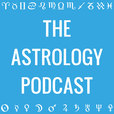
Summary: <br> Episode 129 of the podcast features an interview with Dorian Greenbaum about the recent discovery of a new horoscope from Egypt that dates to the 4th century CE.<br> In September of 2017 Dorian Greenbaum and Alexander Jones published a paper on the discovery through the Institute for the Study of the Ancient World, titled <a href="http://dlib.nyu.edu/awdl/isaw/isaw-papers/12/" target="_blank" rel="noopener">P.Berl. 9825: An elaborate horoscope for 319 CE and its significance for Greek astronomical and astrological practice</a>.<br> The chart contains a number of interesting and unique features, such as zodiacal subdivisions and lots, which we discuss during the course of the interview.<br> Below you will find the show notes, which contain an outline of some of the points that we touched on in the discussion, followed by links to download or stream the recording of this episode of the podcast at the bottom of the page.<br> Show Notes<br> <br> * Introducing Dorian and talking a bit about her background.<br> <br> * Received her PhD from the Warburg Institute in 2009.<br> <br> * <a href="http://ethos.bl.uk/OrderDetails.do?uin=uk.bl.ethos.536787" target="_blank" rel="noopener">The Daimon in Hellenistic Astrology: Origins and Influence</a><br> <br> * Expanded version published by Brill in 2015: <a href="http://amzn.to/2yAgO9i" target="_blank" rel="nofollow noopener">The Daimon in Hellenistic Astrology: Origins and Influence</a><br> <br> <br> <br> <br> <br> <br> * New discovery of a papyrus birth chart that dates to the 4th century CE.<br> <br> * The chart is unique for several reasons.<br> * Is an elaborate or “deluxe” horoscope.<br> <br> * Positions to the degree and minute, plus zodiacal subdivisions.<br> * Only about 26 deluxe horoscopes survive.<br> <br> <br> * Contains the seven Hermetic lots mentioned by Paulus Alexandrinus.<br> * Also calculates the Master of the Nativity.<br> <br> <br> * Paper is titled “P.Berl. 9825: An elaborate horoscope for 319 CE and its significance for Greek astronomical and astrological practice”<br> <br> * Published September 2017 by the Institute for the Study of the Ancient World.<br> * Co-authored with Alexander Jones, who discovered the papyrus in the Berlin archives.<br> <br> <br> * Background on other surviving horoscopes from antiquity.<br> <br> * Around 350 Greek horoscopes survive from antiquity.<br> <br> * They say there are 446 extant horoscopic texts total from antiquity.<br> <br> <br> * Several collections of ancient horoscopes have been published.<br> <br> <br> * About the Greco-Roman “horoscopes”.<br> <br> * Horoscope as a generic term for “chart” (thema) here.<br> * Distinction between literary charts versus standalone (usually called ‘documentary’) charts.<br> * Distinction between standard charts versus deluxe horoscopes.<br> * The lack of delineation potentially being due to verbal interpretations.<br> <br> <br> * Horoscope boards.<br> <br> * Most of the horoscopes are fragments of papyrus with calculated placements.<br> * Usually thought the placements recreated on horoscope board for consultation<br> <br> <br> * Rediscovering the chart.<br> <br> * Where and how was the chart found?<br> * What methods were used to date it?<br> * Are the positions in the chart tropical or sidereal?<br> * The process of putting together the missing pieces.<br> <br> <br> * Lots (so-called “Arabic Parts”).<br> <br> * Not a ton of charts with lots survive.<br> * They are the second most used point outside of the planets in surviving horoscopes.<br> * Most just have the Lot of Fortune, then some the Lot of Spirit, and then a handful of others.<br> <br> * Dorian prefers to refer to it as the Lot of Daimon.<br> * Discussion about the concept of the daimon.<br> <br> <br> * This is the earliest and only standalone chart to cont...
